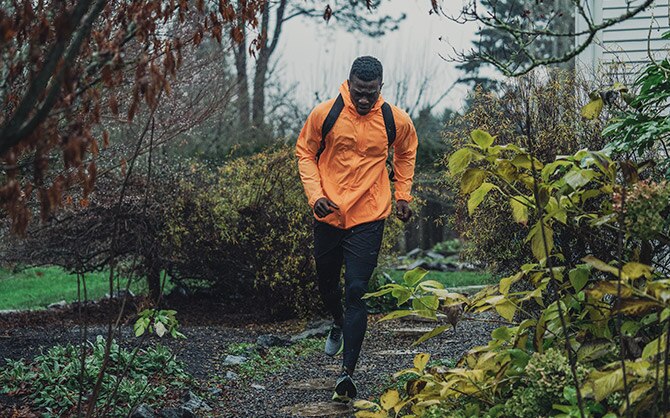Expert tips for cold weather running


It’s important to stick to your routine, weather be damned
Whether the air is cold, the condensation from your breath is as thick as fog or, you can’t feel your hands or feet, sticking to your running plan is crucial.
The training you do in the winter gets you the results you want in the summer. Running in the cold can be difficult, but hibernating throughout the winter because you hate getting out in the frigid air won’t help you hit your long-term running goals.
Embrace these tips for cold-weather running, from pre-run to post-run and everything in between.

Should you run in cold weather?
If you’re already a frequent runner then yes, you should run when it’s cold! Running shouldn’t stop just because the temperature drops, and it’s important to keep up your regular training so you’re not left starting from scratch as soon as the mercury starts rising.
Even if you’re just starting your running journey, the cold weather shouldn’t be a deterrent. Running only brings benefits, and there’s never a bad moment to lace up your running shoes and head out.
In fact, running in the cold – and getting used to it – can even make those springtime runs even more pleasurable, keeping you motivated to keep moving.
Running in winter even brings about its own special benefits, including burning more calories. This is because your body needs to work harder to regulate your core temperature when you’re in colder weather, which then boosts your metabolism. Cold weather running also increases your maximum oxygen consumption, which is the amount of oxygen you breathe in and use during workouts. By improving your oxygen consumption in cooler temperatures, you can improve how fast and far you run during warmer months.
Preparing for cold weather running
Running in the cold winter months means that you’ll need to prepare slightly more than if you were running in the summer. Here, we’ll go through everything you need to prepare before you start your winter runs.

Pre-run: it’s all about the layers
- Assess the elements and choose the right gear for the weather. If it’s raining, go with a hat that has a bill and a light, waterproof jacket. If it’s colder, start with a warm base layer, and build from there. It’s better to have more layers, which you can remove during your run, than too few and risk being too cold on your runs. Learn more about layering up in winter here.
- You should dress like it’s 10 degrees warmer than it actually is outside, because working out increases your core body temperature. If you’re wearing too many layers that are too thick, you run the risk of overheating on your run.
- Take your time to focus on your warmup, with dynamic stretches before heading out. This helps to engage your core, loosen your hips and knees, and warm your body up before your run. This is especially important in the colder months, as you’ll want to get your heart rate pumping as soon as possible to avoid feeling the cold too much when you’re outside.


Keeping up motivation
More than anything, getting outside in this weather is so important to keep motivation up and get you through the winter months. If you need that extra push to get you outside, here are our top reasons:
You’ll warm up:
If your biggest reason for not going out for a run in winter is that you’ll get cold or wet, well then, the best thing to know is there’s nothing like a run to warm you up. Running will help increase your body temperature and help you feel warmer. But also, the right clothes will mean you won’t feel the cold as much. Wrap up in layers to help keep you warm.
You can keep it casual and you’ll feel the benefits
You don’t have to run a marathon or smash any PBs out there in the rain but getting out for even a 30 min run-walk combination will have huge benefits. There’s absolutely no pressure to make these runs your best, but you will feel that your performance will automatically be better. Colder runs are ideal conditions. With less heat, there’s less stress on your body and you’re able to keep a steadier heart rate which means you can focus more on performing.
You’ll feel amazing after
We all know that the mental health benefits of being outside are endless, and winter in particular can be a hard time for people’s mental health. With lower sunlight and less vitamin D going around, Seasonal Affective Disorder (SAD) can hit hard, causing loss of energy and of your concentration levels. A bit of time outside, getting some vitamin D and fresh air will do wonders not only for your head, but also for your energy levels and your mood. After a stressful morning, going out for a run or even a walk in the sun will definitely help you get through the rest of the day.


The run: the first 10 minutes are the hardest
- Be ready to push yourself at the beginning. Your body will be offended by the cold temperature and it takes about 10 minutes to really warm up.
- Studs or spikes are a must when running on ice. Some local running stores will put studs on your shoes for you for a small fee, or you can buy running spikes with them already included. It’s worth avoiding injury and not losing speed from slipping and sliding.
- Like with the rest of running, being in the right mindset will help you push through the physical challenge of being cold. It’s also worth paying a little extra for quality gear that will last and keep you toasty kilometer after kilometer.


Post run: cool downs and hot sustenance
- It’s important to get out of your cold, sweaty clothes as soon as you’re done to avoid the post-run shivers. After you change, take ten minutes to carefully stretch out your neck, shoulders, arms and legs — all of which were probably a little extra tense in the cold.
- Get warm with some a hot drink or nourishing bowl of soup after a chilly run.
- Don’t forget to drink water. It’s easy to put off after a cold run, but hydrating is important, no matter the weather.
While running outside provides you with fresh air and a chance to get in touch with nature, it’s also important to note when to take your runs inside and on the treadmill. If it’s far too cold, heavily raining or even snowing, swap your outdoor run in favour of a treadmill or even a HIIT workout to get your blood pumping. Just remember to listen to your body – and ensure that you’re staying safe, no matter the weather.
